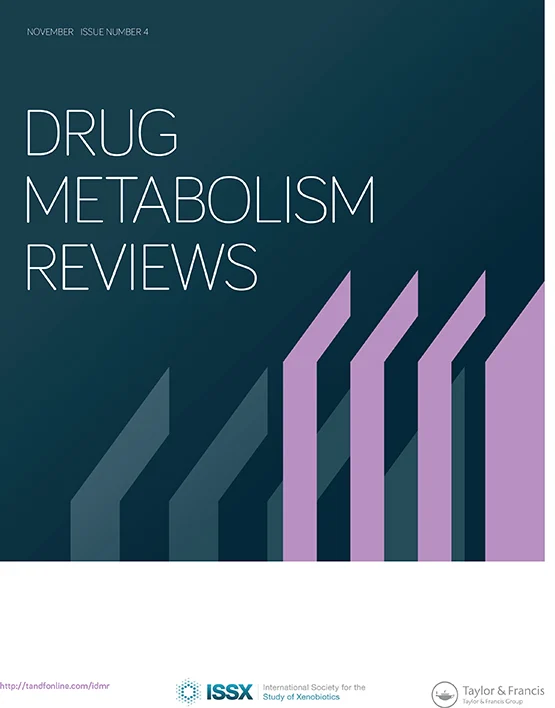Molecular mechanisms of hepatotoxicity induced by compounds occurring in Evodiae Fructus.
IF 3.8
2区 医学
Q2 PHARMACOLOGY & PHARMACY
引用次数: 1
Abstract
Abstract Evodiae Fructus (EF) is a common herbal medicine with thousands of years of medicinal history in China, which has been demonstrated with many promising pharmacological effects on cancer, cardiovascular diseases and Alzheimer’s disease. However, there have been increasing reports of hepatotoxicity associated with EF consumption. Unfortunately, in a long term, many implicit constituents of EF as well as their toxic mechanisms remain poorly understood. Recently, metabolic activation of hepatotoxic compounds of EF to generate reactive metabolites (RMs) has been implicated. Herein, we capture metabolic reactions relevant to hepatotoxicity of these compounds. Initially, catalyzed by the hepatic cytochrome P450 enzymes (CYP450s), the hepatotoxic compounds of EF are oxidized to generate RMs. Subsequently, the highly electrophilic RMs could react with nucleophilic groups contained in biomolecules, such as hepatic proteins, enzymes, and nucleic acids to form conjugates and/or adducts, leading to a sequence of toxicological consequences. In addition, currently proposed biological pathogenesis, including oxidative stress, mitochondrial damage and dysfunction, endoplasmic reticulum (ER) stress, hepatic metabolism disorder, and cell apoptosis are represented. In short, this review updates the knowledge on the pathways of metabolic activation of seven hepatotoxic compounds of EF and provides considerable insights into the relevance of proposed molecular hepatotoxicity mechanisms from a biochemical standpoint, for the purpose of providing a theoretical guideline for the rational application of EF in clinics.枸杞子中化合物致肝毒性的分子机制。
枸杞(Evodiae Fructus, EF)是一种在中国具有上千年药用历史的常见中草药,已被证明对癌症、心血管疾病和阿尔茨海默病有许多有前景的药理作用。然而,越来越多的报告显示,食用EF会导致肝毒性。不幸的是,从长远来看,EF的许多隐性成分及其毒性机制仍然知之甚少。最近,EF的肝毒性化合物代谢激活产生反应性代谢物(RMs)已被牵连。在这里,我们捕捉到与这些化合物的肝毒性相关的代谢反应。最初,在肝细胞色素P450酶(cyp450)的催化下,EF的肝毒性化合物被氧化生成RMs。随后,高度亲电的RMs可以与生物分子中的亲核基团反应,如肝蛋白、酶和核酸,形成偶联物和/或加合物,导致一系列毒理学后果。此外,目前提出的生物发病机制包括氧化应激、线粒体损伤和功能障碍、内质网应激、肝脏代谢紊乱和细胞凋亡。总之,本综述更新了对七种肝毒性化合物代谢激活途径的认识,并从生化角度对所提出的分子肝毒性机制的相关性提供了相当大的见解,旨在为临床合理应用肝毒性提供理论指导。
本文章由计算机程序翻译,如有差异,请以英文原文为准。
求助全文
约1分钟内获得全文
求助全文
来源期刊

Drug Metabolism Reviews
医学-药学
CiteScore
11.10
自引率
1.70%
发文量
21
审稿时长
1 months
期刊介绍:
Drug Metabolism Reviews consistently provides critically needed reviews of an impressive array of drug metabolism research-covering established, new, and potential drugs; environmentally toxic chemicals; absorption; metabolism and excretion; and enzymology of all living species. Additionally, the journal offers new hypotheses of interest to diverse groups of medical professionals including pharmacologists, toxicologists, chemists, microbiologists, pharmacokineticists, immunologists, mass spectroscopists, as well as enzymologists working in xenobiotic biotransformation.
 求助内容:
求助内容: 应助结果提醒方式:
应助结果提醒方式:


